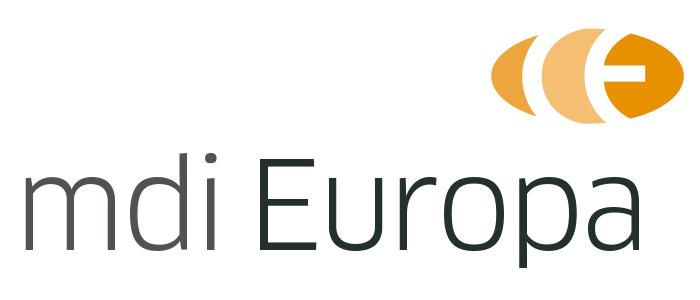Regulation (EU) 2017/746 – also known as the In Vitro Diagnostic Medical Devices Regulation (IVDR) was adopted on May 25, 2017 and thus replaced the In Vitro Diagnostic Medical Devices Directive (IVDD). The Regulation became fully applicable on May 26, 2022. There are massive changes compared to the IVDD confronting manufacturers with numerous challenges.
The provisions for performance evaluation have been revised. The corresponding documents are subject to enhanced scrutiny.
Major Regulatory Changes
For instance, there is a new classification system with new risk classes. An estimated 80% of producers will find their products grouped in higher risk classes under the IVDR thus needing a Notified Body to remain in compliance. There is also an extended version of the Essential Requirements, now called the General Safety and Performance Principles or Requirements (SPR). Moreover, the provisions for performance evaluation have been revised. The corresponding documents are subject to enhanced scrutiny.
The general process for IVDR compliance is reflected below.
IVDR Compliance Process
- Appoint your European Authorized Representative
→ Ask for our quotation! - Identify all EU Directives/Regulations applicable to your product (such as IVDR, WEEE, EMC etc.)
→ We will assist! - Select and perform the conformity assessment procedure applicable to your product
→ We will guide you through! - Check your device against the General Safety and Performance Requirements (annex I)
→ We will provide a checklist! - Identify the applicable harmonized standards for your product
→ We will provide a list! - Prepare a Technical File (annex II and III) and implement a Quality Management System
→ We will assist! - Select a Notified Body (except for class A) and sign your Declaration of Conformity
→ We will provide lists and forms!
Major Aspects of the IVDR
Below you will find a collection of important aspects under the In Vitro Diagnostic Regulation (EU) 2017/746 (IVDR) including short explanations and links towards graphics, downloads, previews on documents etc. If there is anything we can help you with please don’t hesitate to contact us!
Classification Rules under the IVDR
The IVDR introduces a risk-based classification system similar to the MDR. Risk classes range from A to D (A being the lowest and D the highest risk class). Class B, C and D products require the involvement of a Notified Body.
- Check the previews in our supportive information section IVDR
- In addition you might read our article “Notified Body Selection and Change”
- Visit the mdi Europa online library
- Contact our team
Technical Documentation under the IVDR
Technical Documentation requirements under the IVDR follow a certain pattern. mdi Europa set up a checklist and template to assist manufacturers in the compilation of their Technical Files. You are also invited to make use of our extensive expert network should you require in-depth support. Please get in touch for further information!
- Check the previews on Technical Documentation in our supportive information section
- Contact our team
General Safety and Performance Requirements
The SPR under the IVDR include many aspects that must be carefully considered. mdi Europa set up a checklist that will help manufacturers to comply with the IVDR. Please get in touch for further information!
- Check the previews in our supportive information section IVDR
- For further information, please get in touch with our team
Top-Level Guidance from European Institutions
European institutions published a number of top-level documents to support the IVDR transition process, e.g. a Factsheet for Manufacturers and an Implementation Model for the In Vitro Diagnostic Medical Devices Regulation.
We provide our customers with all the required information and guidance. To get a glimpse at some of the documents, please use the following link(s). You are also invited to make use of our extensive expert network should you require in-depth support. For more information, please get in touch with our team.
Unique Device Identification (UDI) under the IVDR
Under the IVDR regime, each manufacturer is obliged to implement a UDI system. The Basic UDI-DI must be included in the Technical Documentation, Declaration of Conformity and Notified Body certificate. Basic UDI-DI and UDI-DI will be used for the registration in EUDAMED.
In addition, the UDI has to be reflected on the labeling. The European Commission and Medical Device Coordination Group (MDCG) issued some guidance documents, e.g. on Basic UDI-DI and UDI-DI attributes, on Basic UDI-DI and UDI-DI Changes and on UDI Core Elements.
You may find these and other useful documents and links in our Library section. You are also invited to make use of our extensive expert network should you require in-depth support. Please get in touch for further information!
- View miscellaneous PDF files regarding UDI in the mdi Europa download section
- Visit our link section regarding the MDR/IVDR
- Contact our team
EUDAMED
Under the IVDR, EUDAMED serves as a central database for the registration of economic operators and products, but also for vigilance reporting and performance studies. It is vital to choose the right partner to comply with the corresponding requirements.
- Visit our complete link section regarding MDR/IVDR
- For further information, please contact our team
Performance Evaluation under the IVDR
A major challenge of the IVDR refers to the updated and specified requirements on performance evaluation. This process is defined as a continuous process that is intended to provide sufficient clinical evidence to demonstrate that the intended clinical benefits will be achieved and that the device is safe. mdi Europa has developed a template to support your performance evaluation process.
- View our download section of guidance documents IVDR
- Check the previews in our supportive information section IVDR
- For further information, please contact our team
Post-Market Surveillance under the IVDR
PMS and in this context, Post-Market Performance Follow-Up (PMPF), is assigned an important role under the IVDR. Post-market data must be used to update essential documents, e.g. risk management and performance evaluation. Manufacturers are required to produce the corresponding documents in accordance with the IVDR, e.g. the PMS Plan and Report/ Periodic Safety Update Report (PSUR).
mdi Europa may provide valuable assistance on these points. Please get in touch for further information.





